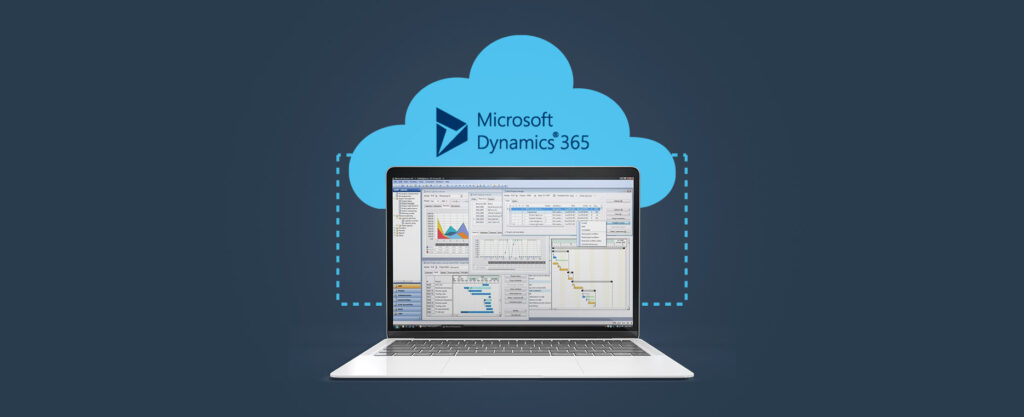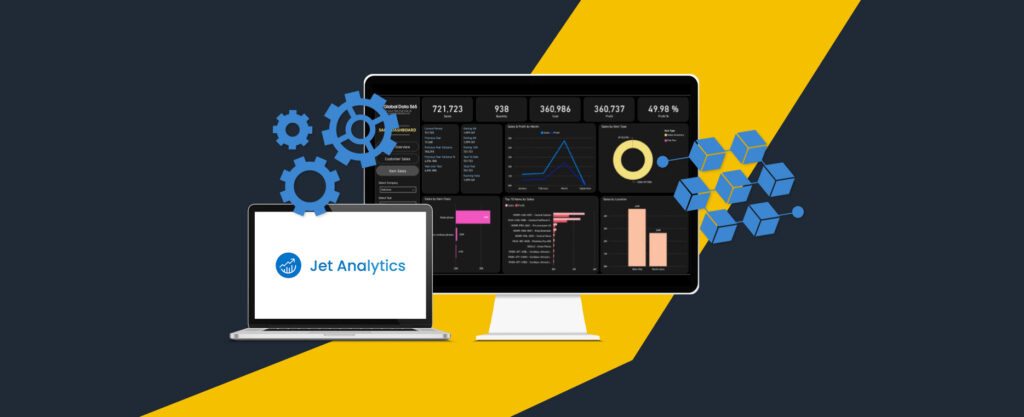Jet Analytics Data Warehouse
Global Data 365 is composed of highly skilled professionals who specialize in streamlining the data and automate the reporting process through the utilization of various business intelligence tools.

To remain competitive, a business needs to implement a jet Data Warehouse system that can keep with future requirements. Preparing to implement an ERP system can be a challenging task. Data storage technology’s future will be characterized by speed, convenience, and efficiency. Many of Microsoft’s legacy GP, NAV, and SL customers are likely to be considering a shift to the new platform now that the company’s latest ERP software version for small and midsize businesses has been released.
Microsoft Dynamics 365 (D365 BC) is the next version of the Microsoft Dynamics NAV code base. It is expanding it to a more cloud-friendly platform and incorporating it more deeply than before with the remainder of the Microsoft stack. The process of data transfer is never an easy task, no matter which ERP system you are moving from. Some particular problems related to data transfer are there. Surprisingly, many of them can be easily handled using a data warehouse.
Although data warehouses have been built for a different reason (i.e. to store data for big data analytics), they can provide tremendous value during an ERP transfer. That is because an entire data warehouse solution can pay itself from the savings generated by the process of migration itself. Enterprises have access to an increasing amount of data from all departments of their sector. Controlling how data travels through the enterprise becomes increasingly important as a company gathers data in different formats.
Data warehouse Obstacles during Data Transfer
Data warehouse technology has not changed much. However, the rise of Big Data and an excess demand for data has uncovered technical vulnerabilities that some legacy warehouses are not equipped to manage. One of the first questions asked from a project team when it comes to data transfer is which data is going to be moved from the old system to the new one? Firstly, all the data is going to be transferred. Secondly, many businesses have collected a large amount of historical data. Exporting data, filtering it, cleaning it, and reformatting it for the new system costs time and money.
Then the challenge arises of matching transactions. Bringing the list of the history of customer payments and invoices is a separate thing from recreating the history, providing the details of the payments made to certain invoices in certain amounts. On the other hand, the cloud model distinguishes storage from computing, resulting in a new level of cost and performance efficiency. Enabling IT to:
– Pay for only what is used.
– Gain total cost/performance leverage.
– Reduce duplication of data.
– Eliminating loading of data.
– Multiple platforms can access the same data.
If the company continues to retain the old system intact, it will cost them time and money. If only a single person knows how to operate the system leaves, or if the system update conflicts with the old ERP software. It will cost your company time on support and maintenance.
Jet analytics Data Warehouse as a Solution
Most ERP system manager fails to think of the alternative; a data warehouse solution that contains data from your old ERP system. It contains all of the data you require for historical reference. With a data warehouse, there is no need to handle transactions on the old system.
In comparison to the cost of maintenance of an old ERP system vs. a data warehouse, the data warehouse comes out on top every time. It not only solves the issue of historical ERP records but also serves an ongoing function as well. It significantly reduces security risks. The cloud has changed the way companies handle and store data for the better. To satisfy your existing and future business needs, cloud computing will help you create a new modern data infrastructure. Your organization now has the opportunity to harness its data’s potential, delivering unmatched productivity and ROI. You are finally ready to turn your data to reveal the deeper insights that will help you make better business decisions and produce higher-quality results.
Data Warehouse as a Migration Tool
By creating a standard data model for your old and new ERP systems within the data warehouse. You can utilize the data warehouse as a migration tool itself. You may proactively use the data harmonization process among the two platforms to clean and normalize data from the old system and prepare it for transfer to the new system.
Since most people think of a data warehouse primarily as a staging area for reports. This is a creative solution to the issue of data migration that is rarely suggested.

Want to try Jet Analytics?
Get Free License
for 30 Days

ERP Migration without Reformatting Reports
The future is hard to foresee, but one certain thing is that the most productive data warehouses are those that can use their data efficiently to optimize operations, anticipate market shifts, and boost availability. Similarly, Jet Analytics is a reporting platform from Global Data 365 that deals with the entire Microsoft Dynamics products, which include Microsoft Dynamics CRM, AX (Axapta), NAV (Navision), GP (Great Plains), SL (Solomon), BC, and Microsoft Dynamics 365 Finance and Supply Chain Management product.
The relation between Jet Analytics and the various products of Microsoft Dynamics operates independently. Users can extract data from the ERP system, which is integrated inside the data warehouse to a harmonized data structure. The customer records of both Microsoft Dynamics GP and Microsoft Dynamics Business Central may appear the same in the data warehouse. Invoice records from various systems will also appear similar.
If you are thinking about transferring data from one system to another, particularly from Microsoft’s legacy ERP products to D365 BC, you can save time and money by implementing these approaches. Jet Analytics data warehouse can offer the following benefits:
– You can automate the removal and transfer of data that you intend to migrate by linking the Jet Analytics product to your old system, storing them in the data warehouse for import to the new system.
– You can tackle the issue of historical data by using Jet Analytics to provide unlimited access to data that is too difficult or costly to transfer. This decreases the probability of security breaches, saves recourses, and improves efficiency.
– If you have used Jet Analytics to develop reports for your previous Microsoft Dynamics ERP system. You can continue using the reports for data with little to no change from your new Microsoft Dynamics ERP system. This saves considerable time and money on implementation.
– You will have the most sturdy BI and reporting platform on the market after the migration, which will remove any potential reporting inefficacies.
A Detailed View over Time
The Jet Analytics data warehouse approach enables you to view both old and new data together as a single whole. Jet Analytics helps businesses to run comparative reports that look back through different years. Information is structure and interpreted by the data warehouse as if it originated from a single system.
Any level of compliance is involved in most ERP system implementations. One such compliance is the necessity of a complete break from the past. This particular problem is tackled effectively by the Jet Analytics data warehouse approach.
Jet Analytics Data warehouse as a Solution
For the success of any business, the present and future warehouse management systems need to embrace the incorporation of BI software solutions and visualization of insight. You can get started with Jet Analytics whether you have upgraded to the latest versions of Microsoft’s ERP system. There are many advantages to implementing a Jet Analytics data warehouse system.
– Jet Analytics can be deployed ahead of an ERP framework update to give you a head start, reduce risk, and lighten the overall implementation workload. When you finally introduce a new ERP system, report creation on Jet Analytics will continue to pay off.
– By acquainting yourself and your staff with the data warehouse setting, you can obtain an understanding of the benefits of implementing the Jet Analytics data warehouse system.
It is time to unlock the potential of your data to drive your business ahead. To learn more about how Jet Analytics can benefit your company or learn to improvise with Jet Analytics training.
Contact us to get more information.






Pingback: Power BI with Jet Analytics - Global Data 365